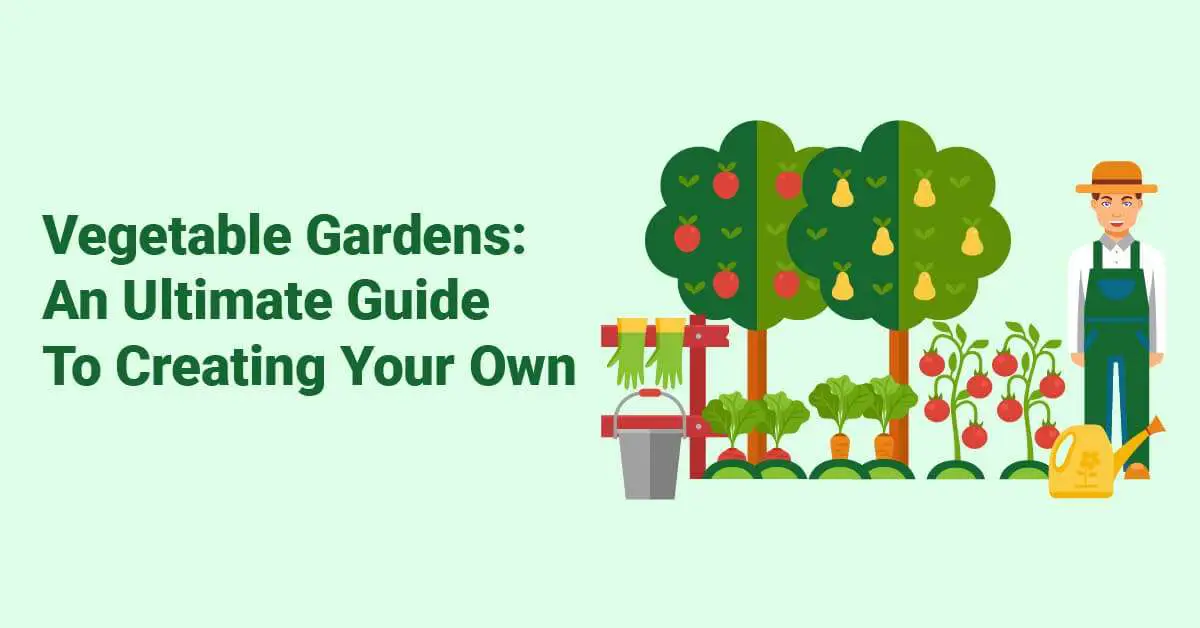In this guide, we will tell you how to prepare your garden for the vegetable patch, when to start growing, what to start off with, and what to be aware of.
Keep this page bookmarked for when you need a reminder.
Table of contents
When And Where Should You Start?
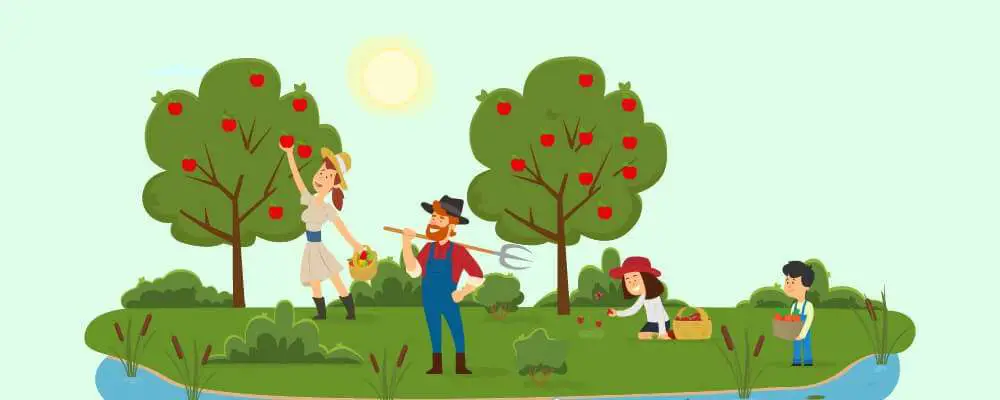
Before you can start planting, you need to know the best location in your yard to turn into a garden. You also need to know the best time of year to help these vegetables grow.
As your knowledge develops, you will be able to move further away from these guidelines. But for now, you should optimize your growing potential to help you produce a crop.
When Is The Best Time To Plant?
Each vegetable will have its own timescale, which can be confusing to a beginner. For that reason, we will tell you the best time for the majority of vegetables.
Ideally, you should aim to plant in Spring (March to May), and then harvest in mid-Summer.
However, depending on the weather conditions and the humidity of your location, you may need to move the date earlier or later.
For the best advice, use the dates on your vegetable seed packet.
Space Availability For Vegetables
The weather conditions of your location, and the space available, will make a massive difference on how well the vegetables grow.
Weather
The vegetable patch should be in a sunny location, where they can get sunlight between 6 and 8 hours a day.
You should avoid locations within your garden that receive strong winds. This force can knock your plants or push them into spending all of their energy to survive instead of growing.
Lastly, if you live in a rainy area, you should plan for good drainage systems. That way, your vegetables won’t flood. If they flood, the roots could rot.
Ideally, you should have a good draining system anyway to prevent this problem.
Space
If you’re planting on the ground, you should use a 100 square foot space to allow 3 to 5 vegetables to grow. Ideally, the size should be in a 10 foot by 10 foot square, but you can go with what is available to you.
If you are using a raised bed, you should have either a 16 square foot area or a 32 square foot area (4 foot by 4 foot or 4 foot by 8 foot area). Although this space is small, it can allow you to put time and energy into one or two vegetables instead of spreading your attention to many.
Either way, your soil needs to be rich in nutrients, as your soil will feed the plants. Keep adding organic matter into the soil to feed it.
Deciding What Vegetables You Wish To Grow
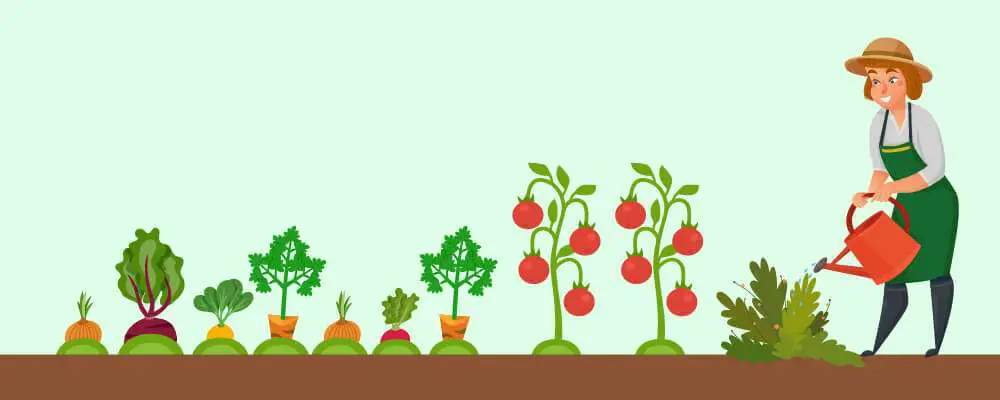
Before we dive into “which vegetables need what”, you should consider what you want.
The best vegetable to grow is one which you’ll use often. That way, you won’t be scratching your head, wondering how to make 20 different meals out of radishes.
As we go through our list, make a note of which vegetables make a natural entrance into your diet. These store-bought vegetables can be replaced with homegrown ones without displacing your typical meal plans.
Common Vegetables To Grow
These vegetables below are the most common to grow because they are easy and produce a big yield. Any one of these would be a great first choice.
Tomatoes
Tomatoes should be planted between February and April. They are available to harvest around July to October.
The great thing about tomatoes is their fast growth rate. You can see them change every day!
This is why many parents teach their children to plant using tomatoes, as the daily change keeps their interest peaked.
Tomatoes can be planted in sow bags, pots, hanging baskets, or on the ground. If you choose a bush variety, then you don’t need to use a frame or trellis to keep them growing.
If you already have the tomatoes in sprout or transplant form instead of seeds, then you should put them deep into the soil. Only allow a few of the leaves at the top to poke through the top. This will help them develop a strong stem and a stable root network.
Runner Beans
Runner beans can be planted between April and July and then harvested after 2 months.
Just like tomatoes, runner beans are quick to grow, making them great for beginners. However, no matter which variety you choose, you’ll need a trainer or trellis for them to climb.
Runner beans need plenty of space as they climb up your walls. You can train them into following a path as they grow, so your garden stays organized and pretty. To do this, you need to use a supporting frame and some wires. As they grow, wrap a wire around the vines to keep them in position. When they get stronger, the stems will easily stay in that place.
However, you will need to check on the tightness of the wires every day, as they can quickly harm your plant if they don’t expand with the vines.
Keep them watered, and you’ll be able to harvest from the plant every 2 months throughout summer. In fact, picking the beans is an important step to keep the vines healthy and constantly producing.
Potatoes
Potatoes can be sown between late February and March. They can then be harvested between July and September.
Potatoes are a fun vegetable to grow, as they can take root almost anywhere. You can put them in bags, bins or just in the ground and they will do well.
If you haven’t got an outside garden, you can use a half-filled bag of compost and plant the potatoes in there. Soon you’ll see green shoots appearing through the soil.
When the shoots come through, you should re-cover them with more compost until the sprouts aren’t visible.
Keep doing this until the bag is full, and you’ll soon have large potatoes ready to harvest.
After 10 or 20 weeks, you can tip out the bag and find your own homegrown potatoes inside!
Throughout this process, remember to water the seedlings. But other than that, this is a vegetable that anyone can grow, no matter their space!
Lettuce
Lettuce is another easy vegetable to grow, but before you start planting the leafy greens, ask yourself how often you’ll use this plant. Often enough? Well, let’s crack on then.
You can start planting lettuce between March and May and can begin the harvest between March and November.
Lettuce is a wonderful vegetable that can last throughout most of the year.
However, this vegetable often comes under attack. Slugs and snails love lettuce, and they can destroy your crop in a day. To prevent them from attacking your vegetable garden, you can mix crushed seashells or sharp grit into the soil. This is a natural deterrent that will harm the creatures without poisoning them.
You can also plant red or purple lettuce instead, as they are less loved by these critters.
Another problem that lettuce can develop is mildew fungus. This normally happens when the rain comes in a hot climate. If you see fungi, remove the infected leaf and give the plants more air.
Ideally, you should avoid watering the plant’s leaves, instead water the soil. This will give the lettuce the water they need without creating a healthy environment for the fungi.
You should also plant each lettuce far away from each other, giving each leaf enough air.
Radishes
Radishes are hardy vegetables and can be planted just 4 weeks after the last frost of the year. After a month, you can harvest the crop and grow it again, creating a summer-long treat.
However, you shouldn’t get greedy with a radish, as although they are fantastic in a salad, there are few dishes you can put them in. That being said, they make a lovely salad dressing or pickle if you do end up growing too many.
Peppers
Unlike most vegetables, bell peppers can be sowed in the early months of the year. You can plant the seeds in the ground from January to April and expect a harvest between June and September.
If you have a transplant sprout, you will need to wait until the Spring months of May and June to plant the peppers, as the harsh cold of winter will kill their delicate leaves.
Peppers don’t need much attention, which is why they are a fantastic first option for many beginner gardeners. Simply water the plants little and often.
When the first flowers begin to appear (around May to July), use a liquid fertilizer to boost the flavor and size of the peppers. Do this once a week for the perfect harvest.
Spinach
Spinach can be planted during two parts of the year. Either between February and June or between September and October.
This vegetable grows fast, and you can cut off leaves as and when you need them instead of harvesting the whole plot.
When you sow spinach seeds, you should make a shallow hole in your soil around 1.5cm deep. Then cover the hole with soil and water it well.
Give the seed 40cm space in all directions and then plant another seed. This is to stop them from overcrowding. Overcrowding can cause fungi to grow or can wilt away the vegetable as they cannot get enough light or air.
Spinach grows best in soil that doesn’t dry out. This means they will do well in shaded areas and with constant watering.
Spinach can be harvested after 6 or 10 weeks of sowing; however, they can grow quickly if the weather is warm.
Carrots
Carrots are a hardy vegetable that can be sown in winter and harvested in these colder conditions too. You can plant the seeds between January and July and harvest them between May and December.
You should give each seed a wide berth and cover them with a thin layer of soil. After around 14 to 16 weeks since planting, you can harvest your yield.
To get a good harvest, you need to prepare the soil. Using a gardening fork, break up the lumps in the ground and remove any stones as you go. Add in some well-rotted organic matter to give the soil some enhancing nutrients.
Once planted, the carrots won’t need to be tended to. Simply keep the plot of land weed-free and water them occasionally. The leaves of the carrots often remove the weeds themselves, as the foliage creates a lot of shade, stopping the weeds’ food source.
Because the foliage helps the carrot, do not cut them down. Not only will that increase the likelihood of weeds, but it will also attract carrot root fly to your area, as they smell the crushed plant.
These flies then lay eggs in the soil, and the larvae eat the carrot’s roots, killing your vegetables while they grow.
Zucchini
Zucchinis love warm weather, which means you can start planting your seeds as soon as the soil temperature reaches 65 to 70 degrees Fahrenheit (18 to 23 degrees Celsius). This is normally around May time.
Because this vegetable needs a lot of sun, you should plant it in an area where the shade cannot reach it. Ideally, the plant should have at least 6 to 8 hours of sunlight a day.
Most zucchini plants like to climb with their vines, so you will need a training frame or trellis to give them a safe way to sprawl out.
However, if you don’t have room for a crawling plant, you can find a bush variety instead. The bush varieties are best for small gardens, raised beds, or pots.
Zucchini plants need a lot of water to produce their fruit, so you should be watering the soil thoroughly every day (but be sure to avoid the leaves). If you notice that the top layer of soil is dry, this is a sign that you need to water more.
Cabbage
Cabbage can be harvested all year round, which is perfect for nervous growers. It also has a long sowing or planting season. You can sow cabbage between February and August or plant sprigs between April and October.
When you sow the seeds, pack them in firmly. This prevents cabbage root flies from laying eggs and eating the roots of this vegetable.
Once every 2 weeks, you should feed the soil nutrient-rich liquid food to help boost the cabbage’s growing abilities. Then after 20 weeks, you can harvest the plants.
Tips On Vegetables
If you are struggling to pick which vegetables to start off with, use these 5 tips to help narrow the search.
1. Pick Something The Whole Household Will Enjoy
If you are the only person who likes cabbage, then there is no point in growing rows and rows of cabbage lines.
Instead, pick a vegetable that will be used often, like potatoes, tomatoes, or carrots.
2. Be Realistic About The Amount Of Vegetables You Need
It can be easy to overplant as a beginner, thinking that most of the seedlings won’t make it. However, growing vegetables isn’t as hard as it looks.
Of course, you can always give excess amounts to your friends and family, but aim to plant with your dinner table in mind.
3. Consider What’s Being Sold At Your Grocery Store
Herbs in a grocery store cost way more than the seeds or time it takes to grow them. This is why many beginners start off with herbs instead of vegetables. However, the same idea can be used for both.
Suppose there is a vegetable that is often out of stock but is easy to grow; make that your first choice. Or maybe you think the choices are too expensive in your local store; in that case, grow them yourself!
Use what’s available to you, to narrow down your choices.
4. Weigh Up Your Social Plans With Your Growing Plans
If you know you’ll be on vacation throughout the summer, then there is no point in planting a vegetable that needs harvesting during the same time. You won’t have the time to look after the crop, and instead, they will rot away.
Instead, you can either ask a friend to tend your garden or pick a vegetable that needs to be harvested in a more socially dry season.
5. Use Good Quality Seeds
Buying seeds is cheaper than buying fully grown plants; however, if they don’t germinate and produce crops, you’ll be wasting money.
Don’t use out-of-date seeds, as they may not produce a yield.
If seeds have been left in the sun or have become damp, they may also become barren.
Instead, pick fresh seed packets from reliable sources.
Creating Your Space
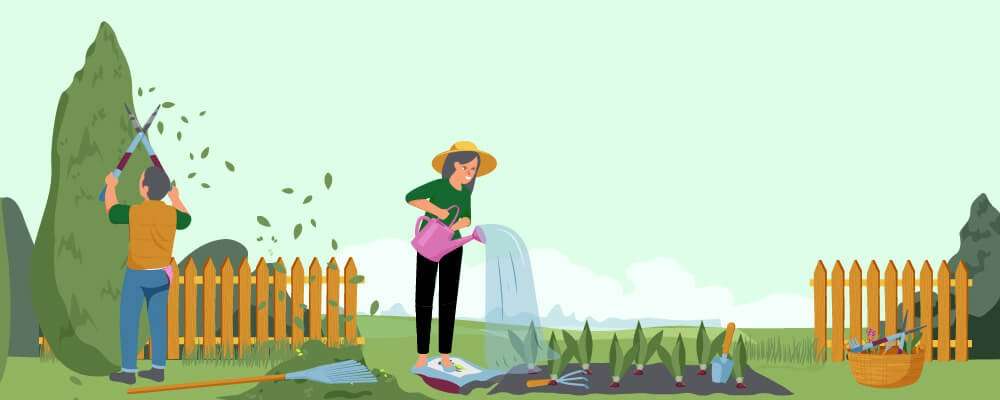
Creating the space for your vegetable garden is where most of the physical work lies.
Once you have planned, prepared, and researched, the rest of the journey will be much easier.
Planning and Spacing
Choosing the right space to grow your vegetable garden will significantly help your harvest. No matter what you are growing, there are two basic requirements – sunlight and water.
Once those requirements are prepared, you can think about the layout plans.
Spacing – Sunlight
As a rule of thumb, all vegetables need at least 6 to 8 hours of direct sunlight. This means removing anything that could shade or block the sun.
Root vegetables are a little more forgiving and can deal with at least 4 hours of direct sunlight. If you live in an apartment or simply don’t receive a lot of sunlight altogether, then root vegetables would be your best option.
Spacing – Water
If you can plant the vegetables close to a water source, that would be perfect.
If not, you should water the seeds every day. Once they take root, you can extend this to every couple of days.
Consider planting your seeds close to your home and using a timed sprinkler system to keep their growth on track.
Planning – Row Cropping
If you have ample space, you can follow the row cropping method. This is when you plant crops in a single file row. The second row would be 18 inches away from the first, and so on.
This method makes it easy for you to walk through the vegetable patch and use your equipment to pull out the vegetables when they are ready.
The downside to this method is that only half of your growing space will be used.
Planning – Intensive Cropping
Intensive cropping is normally used in smaller areas. You can plant two or three seeds close together in a 4 foot bed.
If you are using transplants, you should place them in the soil far enough apart that their leaves are barely touching. If you are using seeds, you should aim for a 3 inch gap between each seedling.
This allows you to use every inch of your garden patch, producing a higher yield. However, it will be easy for weeds to take root in the cover of the foliage. Another problem is the lack of sunlight and air to crowded crops.
Research Your Vegetable
Now you know where to put your vegetable garden and how you want the garden to grow, it’s time to decide which plant to start off with.
Although vegetables are a great choice for beginners due to their durability, you should still research the best ways to grow them.
Using our suggestions above, pick the best seed for you and use it to kick start your further research.
Preparing For Hazards
To help your crop on its way, there are a couple of hazards you need to prepare for. We have some guidance on how to tackle each of them.
1. Birds
Birds will love to rip up your foliage as they build their nests. They might even kick up the soil as they hope to find slugs or worms.
To keep them away, all you need are wind chimes or windmills. The changing colors or sounds will scare off these predators without harming them.
2. Pests
Rabbits, deer, and other big beasts might look pretty in a Disney movie, but in your vegetable garden, they are the big evil. One rabbit could destroy a whole garden if you aren’t careful.
An 8 foot tall fence will fend off any jumping creature, while a 6 inch deep fence will deter any burrowing one.
3. Insects
Just like rabbits, insects can ruin your crop. However, they have the benefit of being sneaky about their destruction.
If you only have a handful of caterpillars or slugs on your garden patch, you can simply pick them up, put them in a bucket and transfer them to a safer location.
If the infestation is too big to handpick the critters, then try using a soapy spray of water and pesticides to kill off the pests.
Sometimes simply adding sharp objects to the soil is enough to deter the ground bugs. For example, adding crushed shells and adding it to the top layer.
4. Inclement Weather
Unless you are Storm from the X-Men, you cannot control the weather. However, you can prepare for it.
Ideally, your garden should have good drainage already. But when heavy storms come, you should rush to your crops and look out for brown leaves. If they were once bright and green but now dull and browning, then it’s a sign that the plant’s roots are rotting.
To keep your plants healthy, give them fresh soil, fix the draining issue, and cut off all the dead or dying leaves.
Soil Care And Nutrition
You should use soil that is dark, crumbly, and moist. These are all signs of healthy soil that can produce life.
As your plants grow, they will use up all the nutrients in the soil. This means that left alone, your vegetable garden won’t last past one harvest.
To keep your soil healthy, you need to add organic matter (normally compost) into the soil to rebuild those all-important nutrients.
Equipment And Tools
The list of tools you should have are:
- Gloves – they will protect your hand from spikes.
- Pruning Shears- they will help you remove dying or overgrowing leaves.
- Hand Fork, Trowel, and Spade – they can help you dig into the soil with precision.
- Watering Can – or any watering device to help you hydrate the plants.
This is the minimum you need to look after your vegetable garden.
Types Of Garden And Care
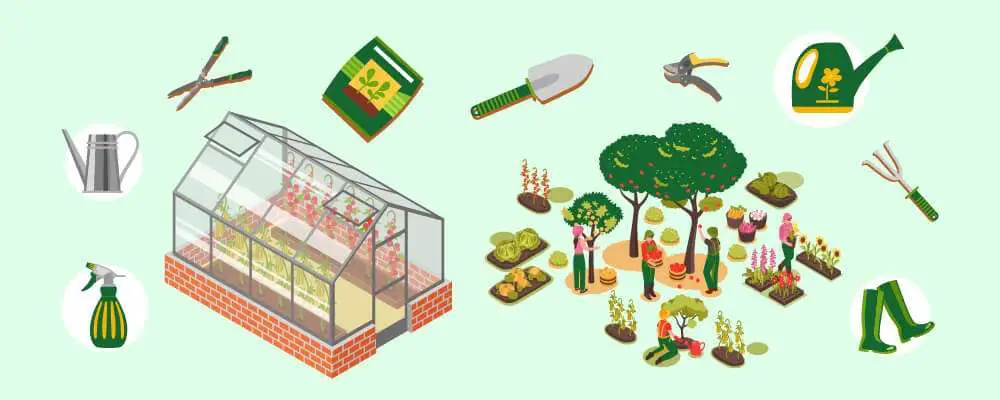
There are two common types of gardens – lawn-based and raised beds. If you are still struggling to pick which one to go with, we have more information to help you on your way.
Lawn-Based Garden
Lawn-based gardens are easy to set up and only require a shovel or hoe to get going. First, you want to remove the sod or layers of grass. This step is easy in terms of mental difficulty, but it is also a hard workout.
Next, you’ll want to reinvigorate the soil. This means removing the dry and lifeless soil and replacing it with the dark, crumble moist version we talked about earlier.
From this point, you can start planting your seeds.
It is easy to step up and can be placed anywhere in your garden. The downside is the heavy workout this job entails.
Raised Beds
Raised beds require you to buy or build a garden structure to contain soil. Being above ground will make your vegetable’s roots more protected from insects.
As a gardener, you will have complete control over the soil and its nutrients. You will also be able to look after your crop at eye level instead of crouching down.
However, the downside is that you cannot expand the bed once built. Whatever you pick will be the size of your vegetable patch.
Water Drainage
To help your garden drain away water, you should put bark chippings around the plant beds. These will absorb the moisture, preventing it from flooding your crop. Ideally, you should only use them when heavy weather is coming or after the rain has already come.
If you use them all year round, your plants might not get the amount of water they need.
Protection From Elements
If you are in an area with strong winds, you should create a windbreak to protect your crop.
This windbreak could be made out of stakes and burlap, a full-blown fence, or anything else that will hold in place while the wind blows.
If you use a burlap material, don’t place it over the plants themselves, as they still need sunlight to reach them. Instead, make a tall material fence around your garden.
To protect from the rain, you should use bark chippings. Lay these on the soil to absorb excess moisture, preventing the rain from drowning your harvest. When the bark has absorbed all it can, remove the bloated pieces and replace it with more bark.
To protect against the heat, avoid watering your plants during the day. Instead, give them extra water but at night. This will stop you from burning the plants through the reflective nature of water.
If you don’t have time to water them at night, focus on watering the soil instead. This will also prevent sun damage while giving them the hydration they need.
You should give liquid nutrients to help them power through the storms throughout all of these dramatic elements.
Summary
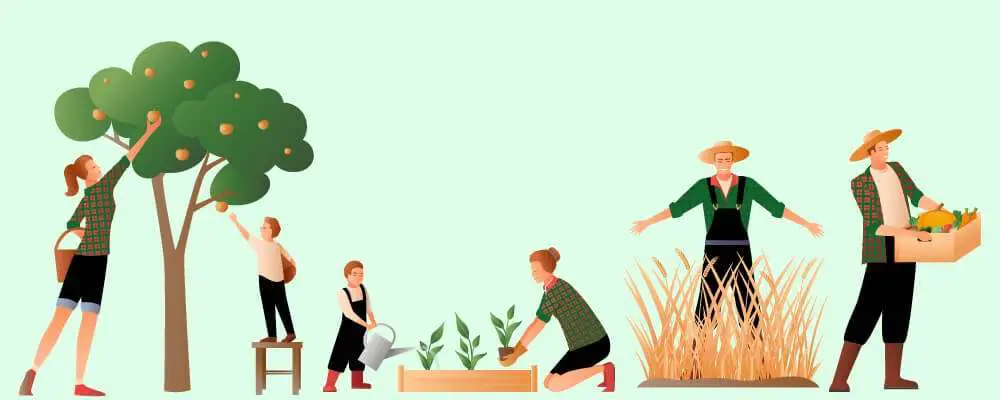
Now you have learned what to look for when starting off your vegetable garden, where to put it in your space, and how to protect it from hazards like pests and the weather.
If you want something simple, use our vegetable suggestions above, along with their harvesting and planting times. If you have small space to grow, follow our intensive cropping method. Bookmark this page, so you have all the information you need when the weather changes or you want to expand your plot.

